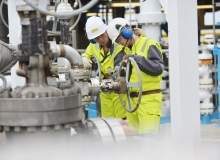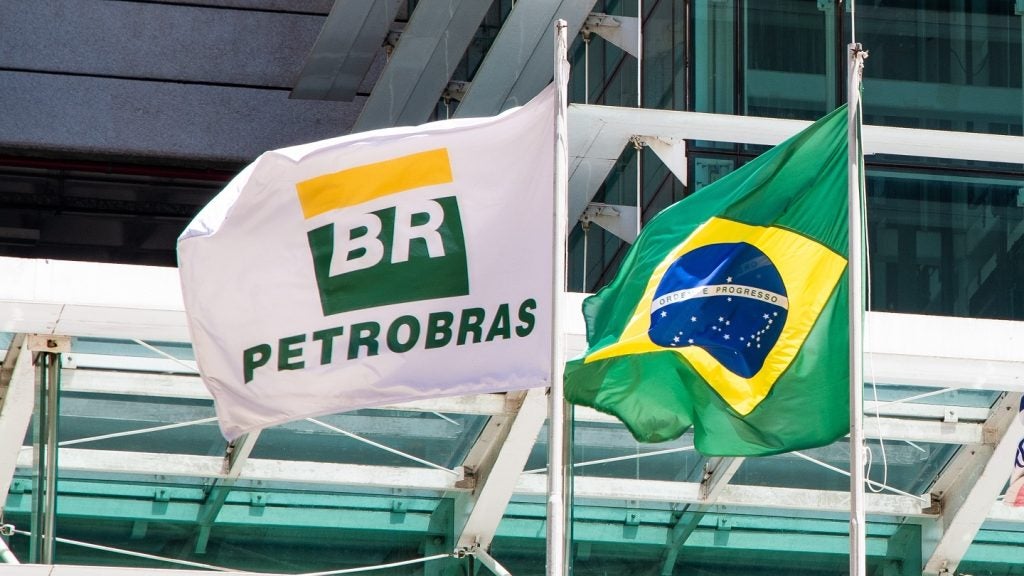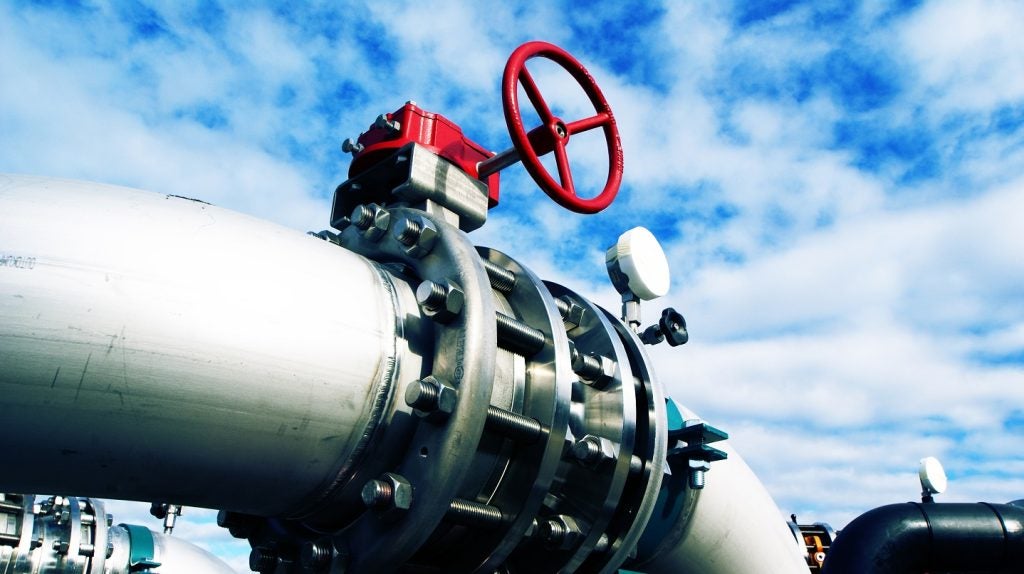

Carbon capture and storage (CCS) has been part of energy and climate change discussions for decades. Despite incremental improvements in the efficiency of hydrocarbon-based power generation, many scientists and environmental campaigners believe CCS is the only effective method of reducing fossil fuel CO2 emissions to levels that are compliant with international climate change resolutions.
The process, which involves the removal of CO2 from the flue gas of heavily emitting point-source polluters before transporting it for underground storage, has proved ruinously difficult to implement on a large-scale, with a number of high-profile projects put on ice and the technology struggling to build momentum in the market. If CCS has struggled to take off on land, then surely it follows that the technology would be exponentially harder to implement in the offshore environment as a means of reducing the CO2 content of extracted natural gas?
As it turns out, Norway, which hosts arguably the world’s most advanced offshore oil and gas industry, has been making an excellent case for the viability of offshore CCS. For a start, Statoil’s offshore Sleipner and Snøhvit gas fields have been storing CO2 from gas since 1996 and 2008 respectively, providing two fully functional demonstrations of safe, stable and permanent carbon storage in geological formations under the seabed (Sleipner stores its separated CO2 in the Utsira saline aquifer, while Snøhvit uses the Stø formation).
It hasn’t all been smooth sailing for Norway’s offshore CCS endeavour, however; in September 2013 the Norwegian government cancelled a planned full-scale CCS project at Mongstad, which was due to store CO2 from a gas-fired power plant in deepwater saline formations. The debate on how to move forward with offshore CCS continues.
See Also:
The Norwegian Petroleum Directorate (NPD), the government agency responsible for managing and regulating the Norwegian continental shelf’s oil and gas resources, has taken a strong leadership role in the evaluation of the country’s offshore CO2 storage potential. Since the agency started investigating CCS options in Norwegian waters in 2009, it has produced three atlases mapping potential CO2 storage sites in the Norwegian North Sea, Norwegian Sea and southern Barents Sea, with Norway’s entire continental shelf now covered.
How well do you really know your competitors?
Access the most comprehensive Company Profiles on the market, powered by GlobalData. Save hours of research. Gain competitive edge.

Thank you!
Your download email will arrive shortly
Not ready to buy yet? Download a free sample
We are confident about the unique quality of our Company Profiles. However, we want you to make the most beneficial decision for your business, so we offer a free sample that you can download by submitting the below form
By GlobalDataThe compilation of the atlases has been led by the NPD’s project director for CO2 storage Eva Halland, and the assessment has revealed some eye-opening stats. The Norwegian North Sea, for example, could hold up to 70 billion tonnes of CO2, equivalent to 20 years’ worth of Norway’s total carbon emissions. Halland describes Norway’s CO2 storage potential, CCS challenges and lessons to be learned from Snøhvit and Sleipner.
New proposals put forward by the European Commission could breathe new life into the nuclear and shale gas industries and leave renewables out in the cold.
Chris Lo: Could you tell me about the NPD’s CO2 storage atlases, and the work that went into preparing them?
Eva Halland: We have published three CO2 storage atlases. The first one in 2011, that was a CO2 storage atlas for the Norwegian North Sea. In 2012 we had the CO2 storage atlas for the Norwegian Sea, and last year it was the CO2 storage atlas for the Barents Sea. So we have now covered the whole Norwegian continental shelf with maps for CO2 storage.
We have a very favourable situation here at the Norwegian Petroleum Directorate [NPD]; we have access to all data that is collected offshore related to petroleum activity. So all seismic, all production data, we have everything here in our office. We have more than 40 years of petroleum activity, so we have been able to use all this data. The role of the NPD is mainly related to petroleum activity, and we have control of what is possible in the oil and gas situation offshore Norway. So we do a lot of mapping, all the concession rounds, all the evaluation. We could use all that data in our work in mapping CO2 storage sites.
You have to turn your mind around when you start mapping CO2 storage, because instead of extracting something from the reservoir, you are going to put something in there. So our focus has been to find the areas where you could store CO2 safely, without leakage, in a long-term perspective. And we have done that all along the coast.
CL: Could you tell me more about the aquifers that you think are particularly suitable for carbon storage?
EH: We also have two CO2 storage projects going on offshore Norway. We have one from Sleipner to the Utsira formation in the North Sea, and we have one from Snøhvit to the Stø formation in the Barents Sea. The Utsira storage started in 1996, so it’s been a fairly long time that we’ve stored CO2 offshore Norway.
So in the North Sea, we have the Utsira formation, which is very good, of course. Johansen formation, which was one of the sites we were looking at when we talked about the Mongstad project. Bryne Søgne is the second largest. So there are several large aquifers in the North Sea. In the Norwegian Sea, we have the Trøndelag platform with the Froan basin. In the Barents Sea, we also have several, but mostly we have looked at the Hammerfest basin. In this area, you have a lot of naturally occurring CO2. So with the three atlases, we have different situations for why we need to store CO2 in those areas.
CL: What can be learned from Snøhvit and Sleipner, in terms of the practicalities of offshore CO2 separation and storage?
EH: They have done it very well; it was very well-planned from the beginning. There is a high CO2 content in the gas, so they were not able to produce or sell the gas with that high CO2 content. They needed to extract the CO2. There was good planning, and they made the effort to find efficient storage. So the whole process worked, and they do continue to do a lot of monitoring of the CO2. I think that’s the best lesson learned for other future projects – to have a good monitoring plan so you can follow the movement of the CO2 plume, and how it behaves.
CL: What would be the main challenges of implementing offshore CCS on a wider scale?
EH: Well, when you do it offshore…there is not much technical challenge in doing it. It costs some money, and I think that’s the biggest challenge. There are several places where there is a lot of gas a high CO2 content, so the technology is there but you need to maybe try to make it a bit cheaper. We know how we can find safe storage sites; we know the process of extracting CO2 from the flue gas. So it’s more just doing it.
CL: Is there enough will from industry and government to meet the costs of CCS implementation?
EH: The reason why we have the Sleipner and Snøhvit projects is due to the high CO2 content [in the gas]. Future discoveries with high CO2 content will have to do the same. That’s because it’s about being able to sell the gas, and they’re not allowed to emit CO2; that’s under Norwegian regulation. And there is a tax on it. The petroleum laws state that they are not allowed to emit either the gas or the CO2.
Offshore-technology.com lists the world’s ten biggest offshore gas projects by estimated reserves.
CL: Onshore CCS has triggered concerns that induced seismicity could compromise the CO2 seals in aquifers. Do you have any similar concerns with offshore CCS?
EH: When we evaluate areas for storing CO2, we don’t have too much seismic activity offshore Norway. We have some small amount, but not dangerous at all. Of course, we have that focus. When we evaluate the different storage sites, we have developed a large characterisation system for both the reservoir and the seal. We say that a good storage site should have more than two seals on top of it. So most of these storage sites have a really huge package of seals. It would have to be a very big earthquake for anything to happen, far above what is possible offshore Norway. But in Japan they had a storage site where they had a big earthquake, and it didn’t affect it. So if you are in particular areas, that’s what you have to be aware of if you’re looking at safer storage sites. And offshore Norway is safe.
CL: Is there a roadmap in Norway to start moving forward with more offshore CCS projects?
EH: There are discussions, but as you know we just stopped the full-scale Mongstad project, and the government is in the situation where they are discussing the future. I hope that we’ll go further in the future. The goal to reduce CO2 emissions is still there, but how to go further hasn’t been decided. That’s an ongoing debate in Norway.
CL: Are you getting interest in offshore CCS from foreign offshore authorities or companies? You were working with the British Geological Survey back in 2009…
EH: Yes, we still work together with the British Geological Survey to look at CO2 storage sites that cross the border between Norway and the UK. We have a partnership with them. There is the North Sea Basin Taskforce, which discusses CCS possibilities around the North Sea.
We also, of course, get a lot of questions and requests for advice from other parts of the world, like the Asiatic countries and the southern African countries. There’s a lot of interest, and with us publishing three CO2 storage atlases that are widely read around the world, we’ve received a lot of questions. How to do it, what the important data is, and so on.
CL: Could this technology help bring about a cleaner future for the offshore oil and gas industry in general?
EH: I would point to what the IEA [International Energy Agency] said in its emissions reduction goals for 2050, that CCS could contribute as much as 14% of CO2 emissions reduction. The technology to capture CO2 is there; of course as all new technologies, there will be continuous work to improve the technology and lower the cost. With the storage sites, we have a lot of good geologists in this world so they know how to and where it will be possible to store CO2. So there is no technological aspect that would hinder us in doing this. But it needs improvement and it needs cost reduction, as well as decisions by some politicians.


.gif)




